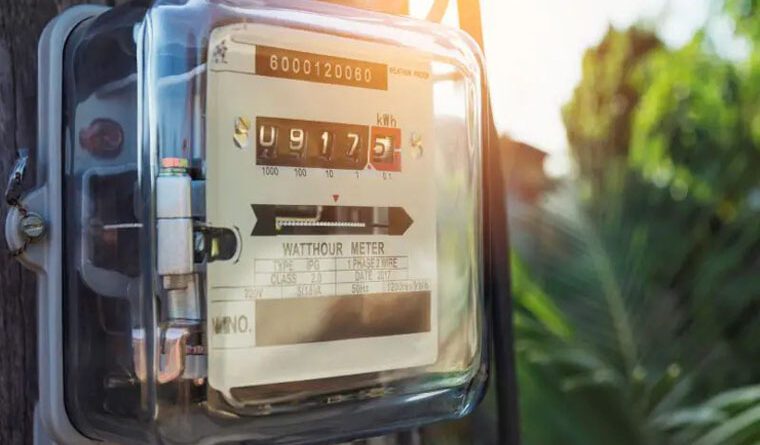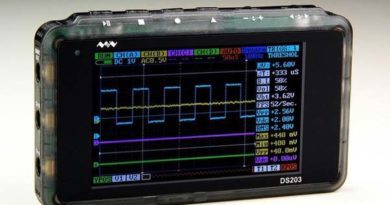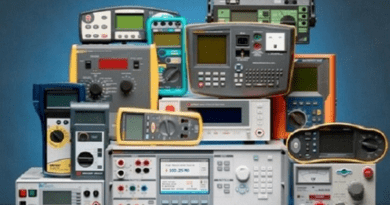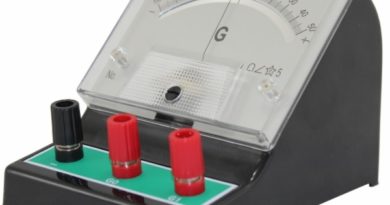Energy Measurement Techniques and Tools
Energy is the product of the power and the time during which the power is used. Although many techniques have been used to measure energy in the past, induction watt-hour meter is now going to be used almost exclusively for the measurement of AC energy at power-line frequencies. The induction watt-hour meter integrates the product of time and power over the period during which power flows and continuously displays the result. This is called an integrating device.
Dimensionally energy has the unit of watt-second. In order to measure large quantities of electricity units of watt-hour or kilowatt-hour are used.
Energy Meter / Watthour Meter
These instruments is same as induction type wattmeters. The moving element of an induction watt-hour meter is an aluminum disk mounted on a vertical shaft. It is free to rotate between the poles of potential and current coils. These poles produce a resultant flux that sweeps across the disk and produce eddy currents in the disk. These eddy currents react with the flux and cause the disk to rotate. The torque produced is proportional to the component of current that is in phase with voltage. The torque, thus also proportional to power.
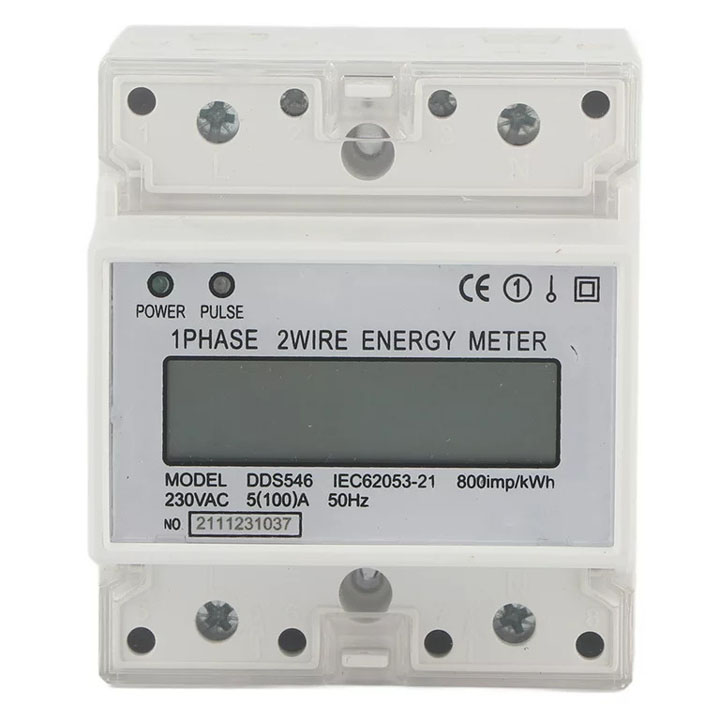
Use Of Permanent Magnet Assymbly Or Production Of Braking Torque
A retarding torque is produced by a permanent magnet assymbly. The disk cuts the flux of permanent magnets as it rotates. This creates additional eddy current which develops a torque that opposes rotation. The magnitudes of this torque is proportional to the speed of the disk. The disk turns at a speed where the driving torque and retarding torque are equal. The driving torque is proportional to power, but the retarding torque is proportional to speed. The speed of the disk is proportional to power, and the number of revolutions is a measure of the power integrated over a period of time i.e. watt-hour. To display the instantaneous energy value, the shaft is coupled through a gear train to a mechanical counter with a register calibrated in watt-hour or kilowatt-hour.
Other types of Energy Meters
The more types of energy meters used are as follows:
1. Electrolytic Meters (action depends upon electrolysis)
2. Motor Meters (small electric motors)
3. Clock Meters (function as clock mechanism)
Electrolytic Meters
It is used for the measurement of dc power mainly. It is basically a ampere-hour meter but its registration can be converted to watt-hour meter. This is done by simply multiplying with the voltage which is assumed constant. Due to this reason these instruments are calibrated to read KWh directly to the declared voltage. Their readings would obviously be wrong when used on any other voltage. Due to their unabling to count power factor, they cannot be used for ac measurements.
Principle
These instruments work on the principle of Faraday’s law of electrolysis. These laws can be stated as:
i. The mass of any given substance deposited or librated in electrolysis is proportional tot he total electric charge that passes (i.e. the product of current and time).
ii. The mass of different substances deposited or liberated by the passage of the same quantity of electric charge are in the ratio of their gram equivalents.
Construction and Working
They consist of a voltmeter in which a suitable electrolyte is contained. Due to electrolysis, a deposit of mercury is given or a gas is evolved (depending upon the type of meter). This quantity of mercury or gas evolved is proportional to the quantity of electricity passed in accordance with the Faraday’s law of electrolysis. So quantity of electricity passed is indicated by the level of mercury in the graduated tube. Hence such meters are calibrated in amp-hours. if supply voltage is assumed constant, they are calibrated in watt-hour or KWh.
Advantages
i. They are cheaper due to their simplicity.
ii. Very accurate even at very small loads.
iii. They are not affected by stray magnetic fields.
iv. Due to absence of moving parts, they are free from friction errors.
Disadvantages
i. Not true watt-hour meters.
ii. They do not count variation in supply voltage. Due to this reason sometimes consumers are overcharged and WAPDA may suffer at any other time.
Testing of Energy Meters
Meters are tested considering the following points.
a. Meters should be tested at the lowest percentage of their marked current specified in the limits of errors for meter of their own class.
b. Meter should also be tested at one intermediate load.
c. Meter should be tested at the highest percentage of marked current specified in the limits of errors.
d. In case of AC meters, they are to be tested at marked current and marked voltage at 0.5 power factor lagging.
e. Watt-hour meters must also be tested for “creep” by applying 10 per cent over voltage to the voltage coil, the current coil circuit open. The meter must not run under these conditions.

